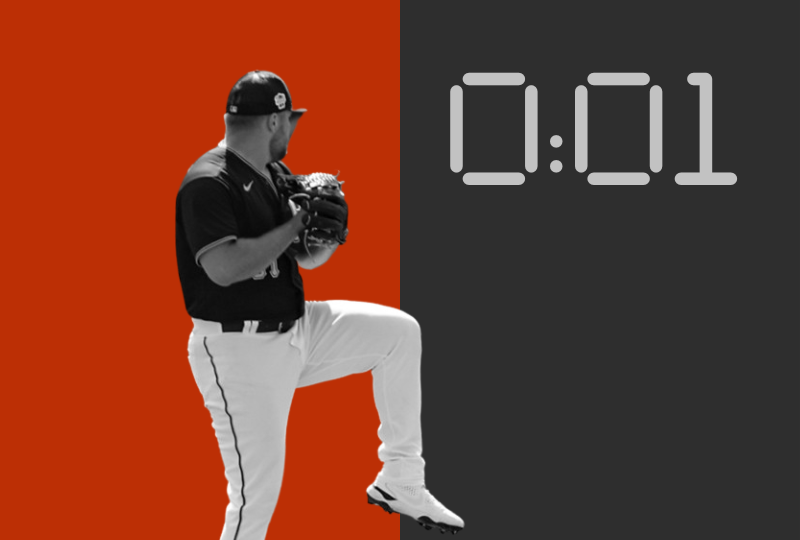The 2023 Major League Baseball season will start on March 31. This year, fans will see many new or amended rules. A few of these new rules could radically alter the way the game is played and enjoyed.
As part of our Baseball 1010 series, here’s a quick but thorough review of the new baseball rules for the 2023 season.
Larger Bases
The new MLB rules on larger bases were approved in September 2022 and will take effect for the 2023 regular season. The bases will increase from 15 inches square to 18 inches square, which will decrease the distance between bases by 4.5 inches. The goal of the rule change is to increase player safety by reducing the number of collisions between players and to give players more room to operate.
The larger bases are expected to have a few effects on the game. First, they may increase the number of stolen bases, as runners will have a larger target to hit and fielders will have less time to react. Second, they may reduce the number of injuries, as players will have more room to avoid collisions. Third, they may make the game more exciting for fans, as there will be more opportunities for players to advance on the basepaths.
Overall, the larger bases are a positive rule change (if only for the added safety benefits) that is expected to make the game of baseball safer.
Pitch Clock
The new pitch clock rules for Major League Baseball are designed to speed up the pace of play. The rules state that a pitcher must begin his motion to deliver the pitch before the expiration of the 15-second timer, or 20 seconds with at least one runner on base. Additionally, a hitter must be in the batter’s box and alert to the pitcher with at least eight seconds remaining.
If a pitcher violates the timer, he will be charged with an automatic ball. If a hitter violates the timer, he will be charged with an automatic strike.
The rules were implemented in the 2023 spring training games and have been met with mixed reactions from players and coaches. Some players have expressed concerns that the rules will take away from the strategy of the game, while others have said that they are a necessary step to speed up the pace of play.
It remains to be seen how the rules will affect the game of baseball in the long run, but in the spring of 2023, game times have been shaved by nearly 20 minutes compared to ST games from a year ago.
Throws to Bases by a Pitcher
Beginning on opening day in 2023 in MLB, the pitcher is also allowed only two “disengagements” (a step-off from the pitching plate or a pick-off attempt) during each plate appearance without receiving a penalty. If the pitcher performs a third disengagement, he must be penalized with an automatic balk, unless an out is recorded on the play.
This means, that on a third pickoff attempt or disengagement, the defensive team must be successful recording an out on the bases, or else a balk will be called. A balk allows all runners to advance one base.
We are being told that MLB umpires will be more stringent in enforcing pitcher motions to a base or home plate. When using their normal windup, a pitcher is allowed one step back, and one step forward ONLY. When throwing from the stretch, a pitcher may tap their front foot, but they are required to come to a complete stop. Under these new rules, the pitch timer will stop when the front foot is lifted during the windup.
Banning the Defensive Shift
Almost since the game of “base ball” was first played, defensive teams have been trying to gain an edge via the positioning of their players. Over time, defenders have found ways to best defend against base hits.
As early as the 1920s, teams were employing “shifts” to place fielders strategically in defense against hitters who had tendencies to hit the ball to a specific area. Some of the batters who faced the shift often include Babe Ruth, Ted Williams, and Willie McCovey.
In recent years, MLB teams have used detailed analytic data to map the “spray charts” of every hitter in the game. Using those charts, teams can place their fielders in the most optimal position to prevent a hit. Many teams often have three infielders on one side of second base. It’s not uncommon to have seen a third baseman shifted to play a short “rover” position in right field. According to some research, as of 2022, MLB teams were using some sort of defensive shift almost 25% of the time.
But all those shifts will disappear in 2023.
MLB’s ban on defensive shifts will be implemented at the starts of the 2023 season. The rule states that two infielders must be positioned on each side of second base when the pitch is delivered. Additionally, all four infielders must have their feet positioned in the infield cutout in front of the outfield grass.
The ban on defensive shifts is designed to increase offense by making it more difficult for teams to position their fielders in a way that takes away hits from batters.
In professional leagues that have previously banned the shift, there has bene an uptick in hits and run scoring. We will learn in 2023 if MLB sees an improvement in run scoring, and which players will benefit the most from this rule change.
Rules Pertaining to Position Players Appearing as Pitchers
For the second consecutive season, Major League Baseball has made changes to the rule book to govern the usage of position players as pitchers.
The MLB rules on position players appearing as pitchers are as follows for 2023:
- A position player can only pitch if their team is leading by 10 or more runs in the ninth inning, their team is losing by 8 or more runs at any time, or the game is in extra innings.
- A position player can only pitch for one inning.
- A position player cannot pitch if they have already played a position in the game.
These common sense rules were implemented for 2023 to reduce the number of position players pitching in blowout games. The rules have been successful in reducing the number of position players pitching, but they have also been criticized for being too restrictive.
Most fans do not like seeing position players in games as pitchers. Most MLB teams have at least 12-13 pitchers on their active roster, so it makes little sense that managers have been turning to position players rather than using a relief pitcher in blowout games.
What do you think of the new MLB rules for 2023? Tell us in the comments section below.






